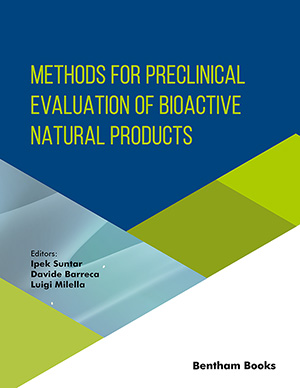Abstract
Aging is a multifactorial process accompanied by gradual deterioration of most biological procedures of cells. MicroRNAs (miRNAs) are a class of short non-coding RNAs that post-transcriptionally regulate the expression of mRNAs through sequence-specific binding, contributing to many crucial aspects of cell biology. Several miRNAs are expressed differently in various organisms through aging. The function of miRNAs in modulating aging procedures has been disclosed recently with the detection of miRNAs that modulate longevity in the invertebrate model organisms through the IIS pathway. In these model organisms, several miRNAs have been detected to both negatively and positively regulate lifespan via commonly aging pathways. miRNAs modulate age-related procedures and disorders in different mammalian tissues by measuring their tissue- specific expression in older and younger counterparts, including heart, skin, bone, brain, and muscle tissues. Moreover, several miRNAs have contributed to modulating senescence in different human cells, and the roles of these miRNAs in modulating cellular senescence have allowed illustrating some mechanisms of aging. The review discusses the available data on the role of miRNAs in the aging process, and the roles of miRNAs as aging biomarkers and regulators of longevity in cellular senescence, tissue aging, and organism lifespan have been highlighted.
Keywords: MiRNAs, aging, longevity, age-related diseases, senescence, lifespan.
[PMID: 18044191]
[PMID: 18044191]
[http://dx.doi.org/10.1093/hmg/ddi101] [PMID: 15809264]
[http://dx.doi.org/10.1186/1479-5876-10-103] [PMID: 22613733]
[http://dx.doi.org/10.1016/j.bbamcr.2010.06.013] [PMID: 20619301]
[http://dx.doi.org/10.1016/j.exger.2011.10.004] [PMID: 22037549]
[http://dx.doi.org/10.1016/j.addr.2012.07.010] [PMID: 22820533]
[http://dx.doi.org/10.1016/j.bbadis.2009.02.003] [PMID: 19419692]
[http://dx.doi.org/10.1016/j.mad.2009.09.002] [PMID: 19782699]
[http://dx.doi.org/10.1016/j.molcel.2016.09.004] [PMID: 27720646]
[http://dx.doi.org/10.4161/mge.1.1.15766] [PMID: 22016841]
[http://dx.doi.org/10.1371/journal.pone.0065165] [PMID: 23762306]
[http://dx.doi.org/10.1101/gad.1953310] [PMID: 20713509]
[http://dx.doi.org/10.1093/nar/gks026] [PMID: 22270084]
[http://dx.doi.org/10.1038/nrm3838] [PMID: 25027649]
[http://dx.doi.org/10.1530/JOE-15-0173] [PMID: 26021555]
[http://dx.doi.org/10.1007/978-981-13-2835-0_3]
[http://dx.doi.org/10.1016/j.biopha.2020.111119] [PMID: 33360051]
[http://dx.doi.org/10.5483/BMBRep.2016.49.2.261] [PMID: 26698870]
[http://dx.doi.org/10.1089/ars.2010.3490] [PMID: 20673162]
[http://dx.doi.org/10.1155/2014/925350] [PMID: 24864265]
[http://dx.doi.org/10.1016/j.redox.2015.06.019] [PMID: 26184557]
[http://dx.doi.org/10.1016/j.tem.2012.07.007] [PMID: 22939742]
[http://dx.doi.org/10.1038/nature02549] [PMID: 15175753]
[http://dx.doi.org/10.1016/j.ghir.2008.05.005] [PMID: 18710818]
[http://dx.doi.org/10.1093/gerona/glr200] [PMID: 22156437]
[http://dx.doi.org/10.4161/cc.5.8.2688] [PMID: 16627994]
[http://dx.doi.org/10.1016/j.cub.2010.11.015] [PMID: 21129974]
[http://dx.doi.org/10.3389/fgene.2014.00472] [PMID: 25628647]
[http://dx.doi.org/10.3892/ijmm.2015.2277] [PMID: 26166810]
[http://dx.doi.org/10.1210/me.2007-0022] [PMID: 17312270]
[http://dx.doi.org/10.1111/j.1440-1681.2008.05057.x] [PMID: 18986336]
[http://dx.doi.org/10.1074/jbc.M702806200] [PMID: 17827156]
[http://dx.doi.org/10.1186/1471-2474-10-148] [PMID: 19948051]
[http://dx.doi.org/10.1007/978-1-61779-430-8_1]
[http://dx.doi.org/10.1091/mbc.e06-12-1109] [PMID: 17596519]
[http://dx.doi.org/10.1016/j.drudis.2006.12.008] [PMID: 17275731]
[http://dx.doi.org/10.1016/j.ceb.2006.09.005] [PMID: 17046229]
[http://dx.doi.org/10.1126/science.1177221] [PMID: 19797661]
[http://dx.doi.org/10.1038/nature05837] [PMID: 17476212]
[http://dx.doi.org/10.1016/j.cell.2008.01.030] [PMID: 18358814]
[http://dx.doi.org/10.18632/oncotarget.24039] [PMID: 29515755]
[http://dx.doi.org/10.1210/me.2009-0295] [PMID: 20081105]
[http://dx.doi.org/10.4161/auto.9064] [PMID: 19535919]
[http://dx.doi.org/10.1159/000343362] [PMID: 23486085]
[http://dx.doi.org/10.1172/JCI64094] [PMID: 23454760]
[http://dx.doi.org/10.1146/annurev.pathol.4.110807.092250] [PMID: 20078221]
[http://dx.doi.org/10.1186/s40169-016-0104-7] [PMID: 27465020]
[PMID: 21155626]
[http://dx.doi.org/10.1016/j.mce.2011.01.008] [PMID: 21241768]
[http://dx.doi.org/10.1074/jbc.M110.163667] [PMID: 21149440]
[http://dx.doi.org/10.1097/MOL.0b013e328328d0a4] [PMID: 19276888]
[http://dx.doi.org/10.3945/ajcn.110.001917] [PMID: 21289221]
[http://dx.doi.org/10.2174/1566524021666210218112616] [PMID: 33602082]
[http://dx.doi.org/10.3389/fphys.2012.00068] [PMID: 22479251]
[http://dx.doi.org/10.1089/ars.2012.4803] [PMID: 23477488]
[http://dx.doi.org/10.1073/pnas.0801613105] [PMID: 18755897]
[http://dx.doi.org/10.1007/s10557-014-6533-x] [PMID: 24924687]
[http://dx.doi.org/10.1016/j.cub.2011.07.027] [PMID: 21920301]
[http://dx.doi.org/10.1016/j.cmet.2012.02.014] [PMID: 22482727]
[http://dx.doi.org/10.1016/j.cub.2014.08.013] [PMID: 25242029]
[http://dx.doi.org/10.4161/cc.8.5.7753] [PMID: 19221490]
[http://dx.doi.org/10.1007/s11357-011-9324-3] [PMID: 22081425]
[http://dx.doi.org/10.1101/gad.1671708] [PMID: 18559475]
[http://dx.doi.org/10.1371/journal.pgen.1006247] [PMID: 27508495]
[http://dx.doi.org/10.1016/j.devcel.2012.05.013] [PMID: 22814608]
[http://dx.doi.org/10.1534/genetics.113.153585] [PMID: 23852386]
[http://dx.doi.org/10.1371/journal.pgen.1004096] [PMID: 24465220]
[http://dx.doi.org/10.4161/rna.24810] [PMID: 23669073]
[http://dx.doi.org/10.1111/gtc.12555] [PMID: 29314553]
[http://dx.doi.org/10.1038/nature10810] [PMID: 22343898]
[http://dx.doi.org/10.1038/nn.3935] [PMID: 25643297]
[http://dx.doi.org/10.1210/er.2011-0001] [PMID: 21441345]
[http://dx.doi.org/10.3389/fendo.2012.00049] [PMID: 22654869]
[http://dx.doi.org/10.1146/annurev-ento-120811-153608] [PMID: 23072462]
[http://dx.doi.org/10.1073/pnas.1313058111] [PMID: 24778227]
[http://dx.doi.org/10.1101/gad.192872.112] [PMID: 22751499]
[http://dx.doi.org/10.1073/pnas.1424408112] [PMID: 25605933]
[http://dx.doi.org/10.1016/j.cell.2009.11.020] [PMID: 20005803]
[http://dx.doi.org/10.1242/jcs.099200] [PMID: 22294612]
[http://dx.doi.org/10.1161/CIRCRESAHA.111.246876] [PMID: 22499900]
[http://dx.doi.org/10.1016/j.jacc.2017.01.064] [PMID: 28408026]
[http://dx.doi.org/10.1161/01.CIR.0000048894.99865.02] [PMID: 12551876]
[http://dx.doi.org/10.1371/journal.pone.0034688] [PMID: 22529925]
[http://dx.doi.org/10.3389/fmed.2017.00074] [PMID: 28660188]
[http://dx.doi.org/10.1093/cvr/cvp015] [PMID: 19147652]
[http://dx.doi.org/10.1159/000479995] [PMID: 28817807]
[http://dx.doi.org/10.1038/srep02038] [PMID: 23784029]
[http://dx.doi.org/10.1016/j.canlet.2009.11.012] [PMID: 20022691]
[http://dx.doi.org/10.1038/aps.2018.30] [PMID: 29877320]
[http://dx.doi.org/10.3892/mmr.2017.7575] [PMID: 28944900]
[http://dx.doi.org/10.1007/s11357-012-9407-9] [PMID: 22538858]
[http://dx.doi.org/10.1016/j.tcm.2014.07.005] [PMID: 25218673]
[http://dx.doi.org/10.1371/journal.pone.0075882] [PMID: 24086656]
[http://dx.doi.org/10.1038/nature11919] [PMID: 23426265]
[http://dx.doi.org/10.4161/nucl.2.2.15135] [PMID: 21738835]
[http://dx.doi.org/10.1016/S0960-9822(01)00328-1] [PMID: 11516951]
[http://dx.doi.org/10.1161/CIRCRESAHA.117.305962] [PMID: 26082557]
[http://dx.doi.org/10.1158/0008-5472.CAN-05-2352] [PMID: 16266980]
[http://dx.doi.org/10.1097/PPO.0b013e318258b60a] [PMID: 22647363]
[http://dx.doi.org/10.1016/j.molcel.2010.11.038] [PMID: 21145484]
[http://dx.doi.org/10.1038/cdd.2013.125] [PMID: 24212931]
[http://dx.doi.org/10.1161/CIRCRESAHA.112.300658] [PMID: 23575307]
[http://dx.doi.org/10.1007/s00395-012-0296-y] [PMID: 22890560]
[http://dx.doi.org/10.1016/j.bbrc.2014.03.035] [PMID: 24650666]
[http://dx.doi.org/10.1126/science.1174381] [PMID: 19460962]
[http://dx.doi.org/10.1016/j.mehy.2013.03.043] [PMID: 23639284]
[http://dx.doi.org/10.18632/oncotarget.7678] [PMID: 26918829]
[http://dx.doi.org/10.1111/j.1474-9726.2011.00714.x] [PMID: 21501375]
[http://dx.doi.org/10.1007/s00018-013-1347-8] [PMID: 23640572]
[http://dx.doi.org/10.1155/2015/732397] [PMID: 26221604]
[PMID: 25472717]
[http://dx.doi.org/10.1016/j.bbamcr.2010.01.003] [PMID: 20080133]
[http://dx.doi.org/10.1016/j.matbio.2015.02.007] [PMID: 25701651]
[http://dx.doi.org/10.1096/fj.13-231688] [PMID: 23825222]
[http://dx.doi.org/10.1016/j.jacc.2016.04.027] [PMID: 27339495]
[http://dx.doi.org/10.1097/JDN.0b013e3182274a98]
[http://dx.doi.org/10.1111/j.1468-2494.2007.00415.x] [PMID: 18377617]
[http://dx.doi.org/10.1177/0963689717725755] [PMID: 29692196]
[http://dx.doi.org/10.4236/jcdsa.2015.54040]
[http://dx.doi.org/10.18632/aging.101326] [PMID: 29165315]
[http://dx.doi.org/10.4161/auto.19629] [PMID: 22441107]
[http://dx.doi.org/10.1016/j.bbrc.2012.12.083] [PMID: 23274497]
[http://dx.doi.org/10.1038/cddis.2017.377] [PMID: 28796263]
[http://dx.doi.org/10.1038/cdd.2011.42] [PMID: 21527937]
[http://dx.doi.org/10.1155/2017/2398696] [PMID: 28593022]
[http://dx.doi.org/10.3390/ijms140612222] [PMID: 23749111]
[http://dx.doi.org/10.1007/s00403-015-1554-2] [PMID: 25708189]
[http://dx.doi.org/10.1111/1523-1747.ep12365625] [PMID: 8875958]
[http://dx.doi.org/10.1038/sj.eye.6702064] [PMID: 16113633]
[http://dx.doi.org/10.1161/CIRCRESAHA.116.308362] [PMID: 27384322]
[http://dx.doi.org/10.1155/2018/9147326] [PMID: 29765508]
[http://dx.doi.org/10.18632/aging.100508] [PMID: 23238588]
[http://dx.doi.org/10.1007/s40139-014-0047-x]
[http://dx.doi.org/10.15252/emmm.201708734] [PMID: 30979712]
[http://dx.doi.org/10.1007/s00125-012-2539-8] [PMID: 22476949]
[http://dx.doi.org/10.1161/CIRCRESAHA.110.227371] [PMID: 20947830]
[http://dx.doi.org/10.4161/auto.21830] [PMID: 22931788]
[http://dx.doi.org/10.1016/j.mito.2011.09.001] [PMID: 21958558]
[http://dx.doi.org/10.1002/jcp.27710] [PMID: 30387147]
[http://dx.doi.org/10.1177/1559325818761455] [PMID: 29662431]
[http://dx.doi.org/10.1097/MOG.0000000000000176] [PMID: 25850346]
[http://dx.doi.org/10.1016/j.mad.2008.05.004] [PMID: 18561983]
[http://dx.doi.org/10.1016/j.mad.2010.12.004] [PMID: 21216258]
[http://dx.doi.org/10.1016/j.freeradbiomed.2016.03.021] [PMID: 27033954]
[http://dx.doi.org/10.1007/s11357-000-0002-0] [PMID: 23604794]
[http://dx.doi.org/10.1093/gerona/57.5.B177] [PMID: 11983714]
[http://dx.doi.org/10.1111/j.1474-9726.2009.00529.x] [PMID: 19878148]
[http://dx.doi.org/10.1073/pnas.1002696107] [PMID: 20805469]
[http://dx.doi.org/10.1016/j.celrep.2012.05.015] [PMID: 22840390]
[http://dx.doi.org/10.1002/jcp.28411] [PMID: 30847942]
[http://dx.doi.org/10.1016/j.semcdb.2020.09.004] [PMID: 33077405]
[http://dx.doi.org/10.1007/978-1-4419-7002-2_11] [PMID: 20886762]
[http://dx.doi.org/10.1523/JNEUROSCI.0490-10.2010] [PMID: 20505094]
[http://dx.doi.org/10.1371/journal.pone.0040028] [PMID: 22844398]
[http://dx.doi.org/10.1007/s12017-009-8104-z] [PMID: 20232515]
[http://dx.doi.org/10.1146/annurev-neuro-061010-113613] [PMID: 21456963]
[http://dx.doi.org/10.1186/s13041-015-0110-5] [PMID: 25884928]
[http://dx.doi.org/10.1007/s00401-017-1804-9] [PMID: 29327084]
[http://dx.doi.org/10.1111/jnc.13507] [PMID: 26710318]
[http://dx.doi.org/10.1111/j.1474-9726.2011.00751.x] [PMID: 21967153]
[http://dx.doi.org/10.1093/brain/awl081] [PMID: 16613893]
[http://dx.doi.org/10.1097/WCO.0b013e3281fbd3dd] [PMID: 17620880]
[http://dx.doi.org/10.1083/jcb.201105092] [PMID: 22508507]
[http://dx.doi.org/10.1038/nrn.2017.92] [PMID: 28855740]
[http://dx.doi.org/10.1016/j.neurobiolaging.2010.03.014] [PMID: 20451302]
[http://dx.doi.org/10.1155/2012/359369] [PMID: 22312330]
[http://dx.doi.org/10.1038/mtna.2014.47] [PMID: 25247240]
[http://dx.doi.org/10.1186/s13046-019-1059-5] [PMID: 30717802]
[http://dx.doi.org/10.18632/aging.100371] [PMID: 22064828]
[http://dx.doi.org/10.1177/1535370217720884] [PMID: 28699360]
[http://dx.doi.org/10.1515/bmc-2016-0014] [PMID: 27505094]
[http://dx.doi.org/10.3390/genes9040174] [PMID: 29561798]
[http://dx.doi.org/10.1016/j.neurobiolaging.2013.06.007] [PMID: 23880139]
[http://dx.doi.org/10.1016/j.freeradbiomed.2016.04.200] [PMID: 27154981]
[http://dx.doi.org/10.1007/s12035-016-0297-1] [PMID: 27889895]
[http://dx.doi.org/10.1007/BF01673400] [PMID: 8275378]
[http://dx.doi.org/10.1177/0022034510377791] [PMID: 20924069]
[http://dx.doi.org/10.1172/JCI77716] [PMID: 25751060]
[http://dx.doi.org/10.1155/2016/1652417] [PMID: 27073801]
[http://dx.doi.org/10.1007/s12020-012-9839-0] [PMID: 23203002]
[http://dx.doi.org/10.1097/MOL.0b013e328350a425] [PMID: 22418571]
[http://dx.doi.org/10.1089/ten.tea.2016.0525] [PMID: 28363268]
[http://dx.doi.org/10.1002/jbmr.1917] [PMID: 23456878]
[http://dx.doi.org/10.1074/jbc.M702810200] [PMID: 17623659]
[http://dx.doi.org/10.1002/jor.22172] [PMID: 22696456]
[http://dx.doi.org/10.5732/cjc.30.0371] [PMID: 21627859]
[http://dx.doi.org/10.1111/acel.12586] [PMID: 28317237]
[http://dx.doi.org/10.1007/s00018-014-1700-6] [PMID: 25108446]
[http://dx.doi.org/10.1038/ncomms10872] [PMID: 26947250]
[http://dx.doi.org/10.1080/15476286.2015.1017205] [PMID: 25826666]
[http://dx.doi.org/10.1155/2017/3028647] [PMID: 29213288]
[http://dx.doi.org/10.1038/celldisc.2016.15] [PMID: 27462462]
[http://dx.doi.org/10.3390/ijms17122146] [PMID: 27999417]
[http://dx.doi.org/10.3892/ijmm.2016.2618] [PMID: 27247228]
[http://dx.doi.org/10.3389/fendo.2019.00093] [PMID: 30881341]
[http://dx.doi.org/10.1139/bcb-2016-0078] [PMID: 28177757]
[http://dx.doi.org/10.1016/S2213-8587(14)70034-8] [PMID: 24731660]
[http://dx.doi.org/10.3389/fphys.2012.00260] [PMID: 22934016]
[http://dx.doi.org/10.1007/BF02982704] [PMID: 18615225]
[http://dx.doi.org/10.3389/fphys.2013.00266] [PMID: 24137130]
[http://dx.doi.org/10.1093/gerona/gly207] [PMID: 30215687]
[http://dx.doi.org/10.1016/j.cmet.2016.05.007] [PMID: 27304505]
[http://dx.doi.org/10.1096/fj.14-254490] [PMID: 24928197]
[http://dx.doi.org/10.1007/s10522-016-9638-8] [PMID: 26922183]
[http://dx.doi.org/10.18632/aging.101207] [PMID: 28331100]
[http://dx.doi.org/10.18632/aging.100677] [PMID: 25063768]
[http://dx.doi.org/10.1101/gad.263574.115] [PMID: 26215566]
[http://dx.doi.org/10.18632/aging.100643] [PMID: 24659628]
[http://dx.doi.org/10.3389/fphys.2014.00239] [PMID: 25018733]
[http://dx.doi.org/10.1016/0014-4827(61)90192-6] [PMID: 13905658]
[http://dx.doi.org/10.1016/S0962-8924(01)02151-1] [PMID: 11684439]
[http://dx.doi.org/10.1016/S0959-8049(96)00058-5] [PMID: 9282108]
[http://dx.doi.org/10.1016/s0531-5565(00)00180-7] [PMID: 11121681]
[http://dx.doi.org/10.1038/cdd.2011.143] [PMID: 22052189]
[http://dx.doi.org/10.1007/s10522-005-4901-4] [PMID: 16518699]
[http://dx.doi.org/10.1016/j.yexcr.2012.09.005] [PMID: 23006819]
[http://dx.doi.org/10.1261/rna.034629.112] [PMID: 22875809]
[http://dx.doi.org/10.1371/journal.pone.0086990] [PMID: 24551047]
[http://dx.doi.org/10.3390/ijms19041051] [PMID: 29614790]
[http://dx.doi.org/10.1111/j.1349-7006.2007.00666.x] [PMID: 18201269]
[http://dx.doi.org/10.3892/ol.2016.5038] [PMID: 27900047]
[http://dx.doi.org/10.1155/2014/178075] [PMID: 24516357]
[http://dx.doi.org/10.1038/srep15793]
[http://dx.doi.org/10.1371/journal.pone.0173912] [PMID: 28291810]
[http://dx.doi.org/10.18632/oncotarget.21180] [PMID: 29221158]
[http://dx.doi.org/10.1101/cshperspect.a001883] [PMID: 20066118]
[http://dx.doi.org/10.4161/rna.20146] [PMID: 22664917]
[http://dx.doi.org/10.1186/s13045-017-0538-4] [PMID: 29073933]
[http://dx.doi.org/10.1016/j.ccr.2010.09.005] [PMID: 20951946]
[http://dx.doi.org/10.1101/gad.233585.113] [PMID: 24532687]
[http://dx.doi.org/10.1038/cddis.2017.495] [PMID: 29022903]
[http://dx.doi.org/10.1038/cdd.2012.130] [PMID: 23059786]
[http://dx.doi.org/10.1038/onc.2011.629] [PMID: 22249270]
[http://dx.doi.org/10.1128/MCB.00510-12] [PMID: 22547681]
[http://dx.doi.org/10.1186/1747-1028-2-10] [PMID: 17343761]
[http://dx.doi.org/10.1021/bi200642e] [PMID: 21619050]
[http://dx.doi.org/10.1371/journal.pone.0001864] [PMID: 18365017]
[http://dx.doi.org/10.1002/stem.1699] [PMID: 24648336]
[http://dx.doi.org/10.1126/scisignal.2000442] [PMID: 19861690]
[http://dx.doi.org/10.1073/pnas.1017346108] [PMID: 21187425]






























